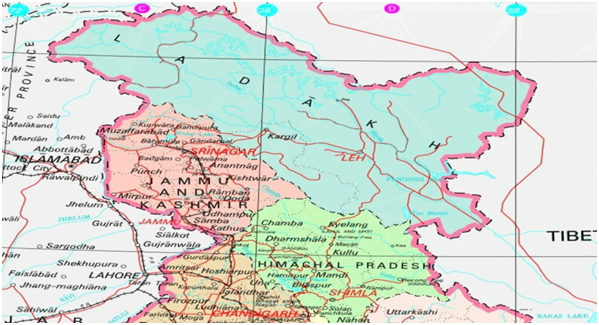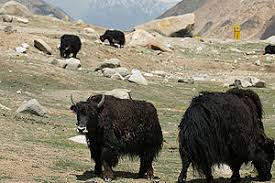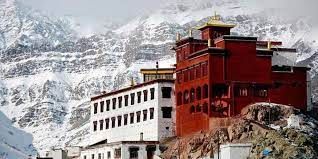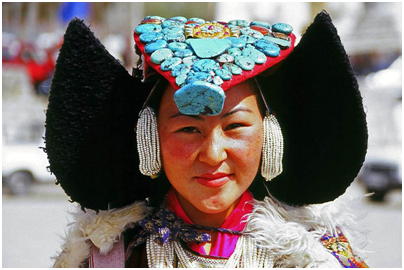- Books Name
- Social Science Book
- Publication
- Cognizance Publication
- Course
- CBSE Class 7
- Subject
- Social Science
The Cold Desert- Ladakh
Ladakh is made up of 2 words “la”, meaning ‘mountain pass’ and “Dak” meaning ‘country’.

Temperature and Climate
Ladakh is a cold desert lying in the great Himalayas on the eastern side of Jammu and Kashmir. The Karakoram range in the North and the Zanskar mountain in the South, enclose it. Several rivers flow through Ladakh,Indus being the most important among them. Several glaciers are found in ladakh for example-The Gangri glacier.
The altitude in Ladakh varies from about 3000m in Kargil to more than 8000m in the Karakoram. Due to its high altitude, the climate remains extremely cold and dry. The air at this altitude is so thin that the heat of the sun can be felt intensely. The day temperatures in summer are just above zero degree and the night temperature well blows -300 C. It is freezing cold in the winters when the temperature may remain below -400 for most of the time. Ladakh lies in the rain shadow of the Himalayas, due to which it received little rainfall as low as 10 cm every year. The area experiences freezing winds and burning hot sunlight.
Ladakh is also known as Khapa-Chan, which means snow land.
Drass, one of the coldest inhabited places on Earth, is located in Ladakh.
Rainforest(Flora and fauna)
Due to high aridity, the vegetation is sparse. There are scanty patches of grass and shrubs for animals to graze.Groves of willows and poplars are seen in the valleys. During the summers, fruit trees such asapples, apricots and walnuts bloom.

Robins, redstarts, Tibetan snowcock, raven and hoopoe are common. Some of these are migratory birds. The animals of Ladakh are wild goats, wild sheep, yak and special kind of dogs. The animals are reared to provide for the milk, meat and hides. Yak’s milk is used to make cheese and butter. The hair of the sheep and goat is used to make woolens.
The finest cricket bats are made from the wood of the willow trees.
The Chiru or the Tibetan antelope is an endangered species. It is hunted for its wool known as shahtoosh, which is light in weight and extremely warm.
People

People of Ladakh are either Muslims or Buddhists. In fact, several Buddhist monasteries dot theLadakhi landscape with their traditional ‘gompas’. Some famous monasteries are Hemis, Thiksey, Shey and Lamayuru. In this summer season, the people are busy cultivating barly, potatoes, peas, beans and turnip. The climate in winter months so harsh that people keep themselves engaged in festivities and ceremonies. The women work not only in the house and fields, but also manage small business and shops.Leh, the capital of Ladakh is well connected both by road and air. National Highway 1Aconnects leh to Kashmir Valley through the Zojila Pass.
Tourism is a major activity with several tourist streaming in from within India and abroad. Visit to the gompas, tracks to see the meadows and glaciers, witnessing ceremonies andfestivities are important activities. Life of the people is undergoing change due to modernisation.

People of Ladakh over the centuries learned to live in balance and harmony with nature. Due to scarcity of resources like water and fuel, they are used with reverence and care. Nothind is discarded or wasted.
Manali Leh Highway crosses four passes,Rohtang la, Baralacha la, Lungalacha la and Tanglangla.
The highway opens only between July and September when snow is cleared from the road.

 Cognizance Publication
Cognizance Publication
